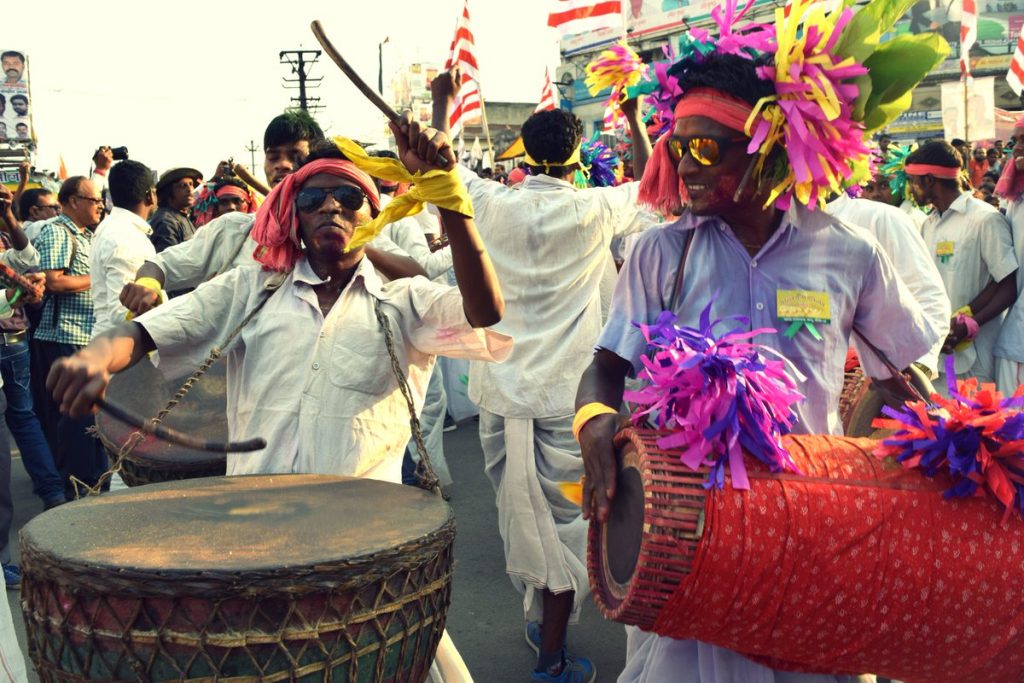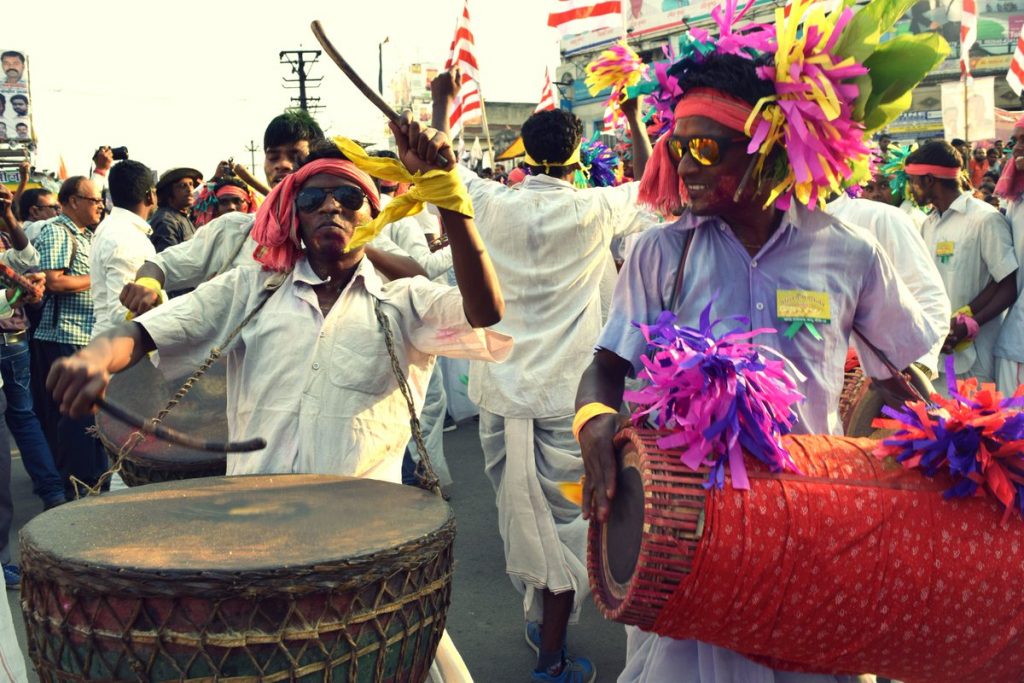In Orissa, Sarhul is indeed one of the most popular tribal festivals. On the third day of the moon or the fortnight of ‘Chaitra’, the Sarhul festival in Orissa is celebrated and marks the start of the spring season or “Phaguna” and is celebrated until June or “Jeth.” Sarhul means trees’ worship. These tribes, being close to nature, commence the festival of Sarhul with the reverence of trees and many other elements of nature.
As per many legends, the origin of the Sarhul festival dates back to the Mahabharata period. A sarna is a group of trees where on different occasions the tribal people worship. Among many others, such a grove must house at least five salt trees, also known as sorjum, considered to be very sacred by tribals.

Santhal, Oraon and Munda tribes are the tribes celebrating Sarhul. It is only after this festival that new agricultural activities such as crop cultivation take place, and the tribes bring new crops, mostly paddy, leaves of the trees , flowers and fruits, to use.
Mostly prevalent in Northern Odisha, the Sarhul festival is seen to mark the beginning of the New Year by worshipping Sal trees. In the Sarna religion, the Sal tree is of great significance. The people of the tribe worship the Sal tree because they believe that Goddess Sarna protects them from all natural disasters and calamities. The worship of the Sal tree is therefore an important part of the Orissa Sarhul festival. Its flowers are used for the worship of the village deity.
You can read our another post on 7 Amazing health benefits of Ajwain
Sarhul Puja
The tribal priests first conduct Sarhul puja in their respective villages, and then, at Rourkela, which is the largest venue in the tribal-dominated Sundargarh district where devotees from different communities travel to worship. The festival is devoted to Mother Earth and its life-sustaining components. Rituals include the alliance of Mother Earth and the God of the Light.
The Sal flowers and Prasad, or offerings to the deities, are distributed among the villagers after all the rituals have been performed by the Pahan or the village priest.
The Oraon tribes are ardent devotees of Lord Ram and Sita. They worship Sita as Mother Nature (Dharti Mata).
Hadia, a local beer brewed from a mixture of rice, water and some tree leaves, is drunk by the tribal people on this day, and tribal men , women and children dressed in colourful and ethnic clothes sing, dance and rejoice.
Adorned inwhite sarees with red borders, tribal women and girls hold metal pots on their heads loaded with fresh grains. The cultural outfit worn by men is called “karia” and “khanria” is the term for women.
Sarhul Dance
The Sarhul dance forms convey the people’s exuberance and yuletide feelings and the soulful Sarhul songs narrate the tales associated with the tribe’s cultural background, values and practices. The Santhal dance at the Sarhul festival in Orissa is a common tribal dance style. Performed during various festivals and occasions, it showcases the native tribes’ faith, rituals and unity.
Tribal music is played by the tribal people themselves, using traditional musical instruments.
The dresses worn by the dancers are decorated with bright colours. The dance troupe’s male members wear a dhoti and a turban, and as the tribe is very similar to nature, their body is ornamented with colourful flowers.
The festivities are celebrated in a joyful mood by people of various age groups celebrating the Sarhul festival in Orissa. Adolescent boys and girls dance and sing to the beat of drums all night, while older spectators sit around watching and enjoying the festivities. Many treats made with meat, fish , fruits , vegetables and leaves are prepared and enjoyed by the people while enjoying the dance.
Sarhul Cuisine
The festival includes varieties of distinctive Sarhul cuisine. A specialty of the Sarhul cuisine called ‘handia’ or ‘diang’ is the prasad given to the people during the celebration. It consists of rice, tree leaves and water.
The Pahan ‘is named another sarhul cuisine that reflects union. The serving of ‘khaddi’, a common evening sarhul cuisine, is not missing from the banquet and dance.
Non-vegetarian sarhul cuisine includes fish sukha, an exclusive dried or baked fish preparation. In addition to specialties, leafy vegetables, roots and shoots, pulses, rice, beans, fruits , flowers, leaves and mushrooms are the things to taste in a sarhul cuisine. During this time , a number of mushrooms such as bhardo, bihidien and rugda are available. It is assumed, therefore, to be a festival of nature.
Conclusion
Not only does the fest convey the message of unity among the tribal communities across India, but it also strongly promotes their indigenous art. Sarhul is not restricted to any exclusive part of Indian society , despite being an Adivasi festival. Other sects and parties, such as Hindus, Muslims and Christians, are also active in congratulating the dancing crowd.
With great fervour and joy, tribes all across Odisha and Jharkhand celebrate this festival. After this festival, it is believed that the earth will become fertile and the sowing process will begin. It also depicts the richness of our nation’s history.
More: Wanted to download Odishashop.com visit here

